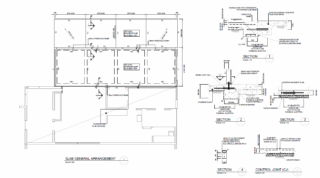Craigslea High School Canteen
BEC’s Craigslea High School project involved the demolition and extension of the existing school canteen alongside BSPN Arcitecture. The BEC team provided structural design and documentation as well as construction phase support.
Following the demolition of the existing canteen and pavement slab, we undertook an inspection of the exposed roof structure and framing to assess how best to approach design of the extension bracing. The new school canteen structure required full glazing on all three sides of the extension, which left minimal room for wall bracing. To work around this, we braced the extension primarily through the rear wall where it met the existing structure and roof.

